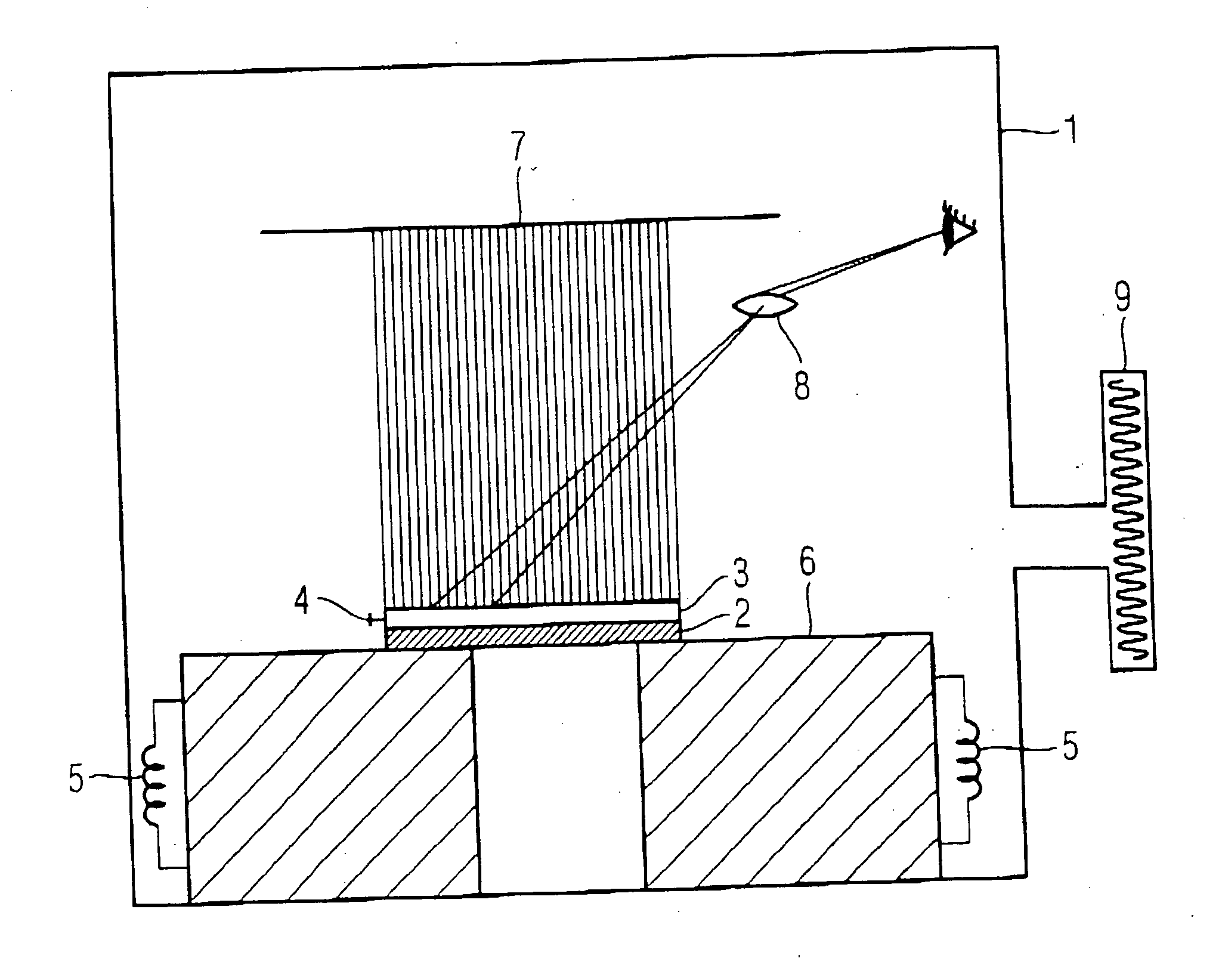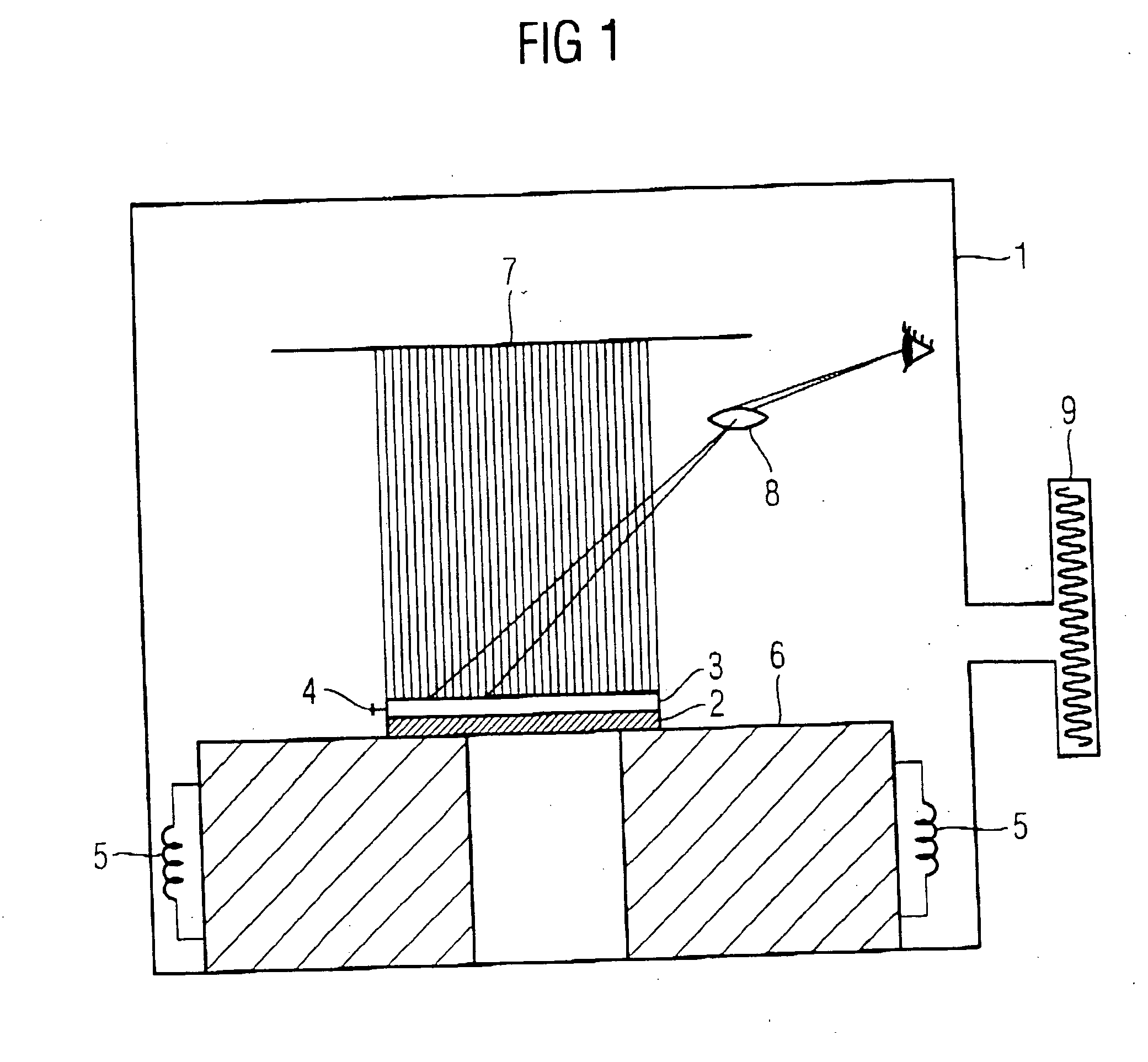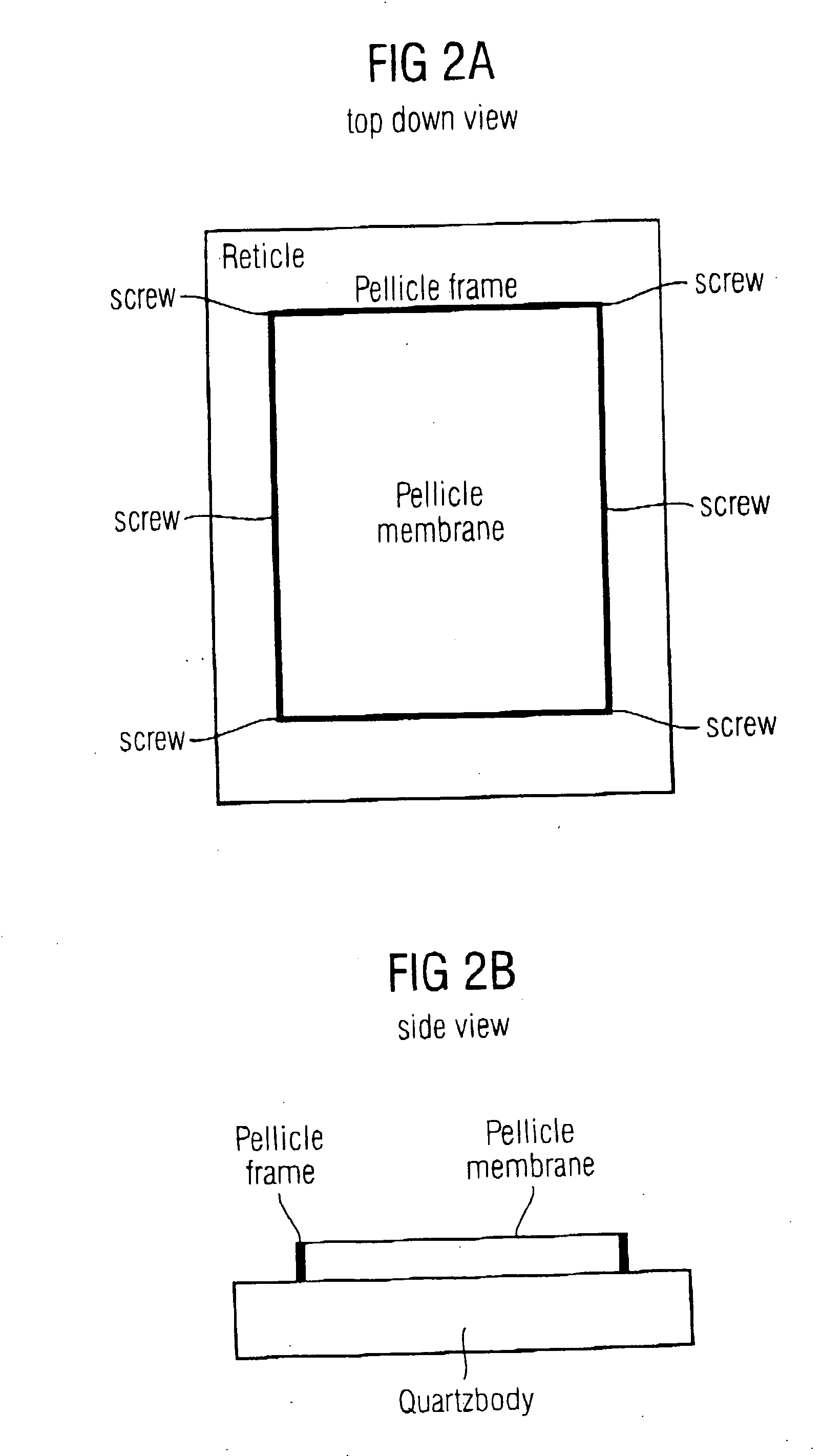Method for cleaning lithographic apparatus
- Summary
- Abstract
- Description
- Claims
- Application Information
AI Technical Summary
Benefits of technology
Problems solved by technology
Method used
Image
Examples
Embodiment Construction
[0034]FIG. 1 schematically depicts a chamber 1 for cleaning a photo-mask 2, wherein the photo-mask is positioned in the chamber by providing a surface 6 on which a photo-mask is placed. The photo-mask 2 also includes a pellicle 3 mounted on the photo-mask, wherein a valve or venthole 4 is provided between the pellicle and photo-mask, to regulate the pressure in the space between the photo-mask and the pellicle. The surface 6 on which the photo-mask has been placed is provided with a heater 5 which controls the temperature of the photo-mask 2.
[0035] After placing the photo-mask 2 in the chamber 1, the chamber is evacuated for example, by a vacuum pump 9 to a pressure of approximately less than 100 mbar. In the chamber, an electron shower 7 is generated, and the surface of the photo-mask 8 is inspected. After inspecting the surface in regular intervals, the photo-mask no longer has crystal growth present. After no more crystals are detected on the surface of the photo-mask, the chamb...
PUM
 Login to View More
Login to View More Abstract
Description
Claims
Application Information
 Login to View More
Login to View More - R&D
- Intellectual Property
- Life Sciences
- Materials
- Tech Scout
- Unparalleled Data Quality
- Higher Quality Content
- 60% Fewer Hallucinations
Browse by: Latest US Patents, China's latest patents, Technical Efficacy Thesaurus, Application Domain, Technology Topic, Popular Technical Reports.
© 2025 PatSnap. All rights reserved.Legal|Privacy policy|Modern Slavery Act Transparency Statement|Sitemap|About US| Contact US: help@patsnap.com



